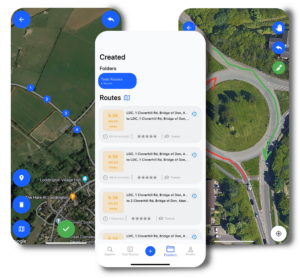When preparing for your driving test, it’s natural to wonder: how long does a road test take? The duration of a practical driving test in the UK is usually around 40 minutes, but there’s much more to it. In this blog, we’ll walk you through the typical timeline, what’s involved in the test, and provide key tips to ensure you pass with flying colours.

How Long Does a Road Test Take?
A practical driving test in the UK typically lasts about 40 minutes. During this time, the examiner will assess your ability to drive safely and competently in real traffic conditions. The test is divided into different sections, each designed to test various driving skills, including handling busy roads, manoeuvring, and following instructions.
The main sections of the test include:
- Driving in Traffic: This assesses how well you drive in typical traffic conditions, such as stopping, starting, and lane changes.
- Manoeuvres: You’ll be asked to demonstrate a few key driving skills like parallel parking, reversing, and performing a three-point turn.
- Independent Driving: You’ll be asked to follow directions either from a sat-nav or road signs to test your ability to drive safely without guidance.
- Reversing: You’ll need to reverse the vehicle in a controlled manner to show your spatial awareness.
Although the test may seem short, the examiner will be looking for safe and confident driving throughout.
What to Expect During the Road Test
Here’s a breakdown of the key stages of your 40-minute road test:
1. Introduction and Car Safety Check (5 minutes)
When you arrive at the test centre, the examiner will ask to see your provisional driving licence and perform a brief safety check of the car. You will be asked to demonstrate how to operate essential vehicle functions, such as lights, wipers, horn, and defrost. This ensures that you can safely use the car during the test.
2. The Driving Section (30–35 minutes)
This is the bulk of the test, where the examiner will assess your ability to drive competently in traffic. You’ll need to demonstrate:
- Lane discipline
- Appropriate speed control
- Judgment of gaps in traffic
- Safe use of mirrors and signalling
The examiner will also ask you to complete one or two manoeuvres, such as parallel parking, bay parking, or reversing around a corner, to test your control and accuracy. You’ll need to perform these tasks safely and confidently.
3. Independent Driving (20 minutes)
During the independent driving section, you’ll either follow directions from a sat-nav or road signs to navigate around the area. This test tests your ability to drive safely without constant guidance from the examiner, helping them assess your decision-making and ability to handle unfamiliar roads.
4. Feedback and Results (5 minutes)
Once the driving part is complete, the examiner will provide immediate feedback. They’ll tell you if you passed or failed and explain the reasons behind the decision. If you pass, you’ll receive a pass certificate that allows you to apply for your full driving licence.
5 Key Tips for a Smooth Road Test Experience
The best way to ensure you have a smooth road test is to be well-prepared. Here are some essential tips to help you succeed:
1. Practice Your Manoeuvres
Before your test, make sure you’re comfortable with the key driving manoeuvres, like parallel parking, bay parking, and three-point turns. These are often assessed during the test and should be second nature when you take your test.
2. Familiarise Yourself with Test Routes
While the exact test route is not disclosed in advance, knowing the general area of your test centre and the types of roads you may encounter is vital. Many learners use tools like RouteBuddy to practice local driving test routes, which can help you become familiar with typical test roads and reduce test-day anxiety.
3. Get Plenty of Rest
Make sure you’re well-rested before your test. Feeling alert and focused will help you stay calm and make better decisions on the road.
4. Stay Calm and Confident
It’s normal to feel nervous, but try to stay calm. Your examiner is there to assess your skills, not to trip you up. Keep your focus on driving safely and confidently. Take your time and remember that you’ve been prepared for this moment.
5. Bring the Right Documents
Before you head to the test centre, make sure you have your provisional driving licence and any other necessary documents. Missing paperwork could result in your test being cancelled, so check everything is in order beforehand.
What Happens After the Road Test?
Once your road test is finished, the examiner will give you feedback. Here’s what happens next:
1. Passing the Test
If you pass, congratulations! You’ll receive your pass certificate, which means you can now apply for your full driving licence. It’s time to start enjoying the freedom of the road!
2. Failing the Test
If you don’t pass, don’t worry, it’s common for learners to need a second attempt. The examiner will provide feedback on areas where you can improve, and you can use that feedback to guide your next round of practice.
Conclusion: Your Road Test, Your Success
So, how long does a road test take? On average, it lasts around 40 minutes, but it’s a big part of your driving journey. With the right preparation, you can ensure a smooth and successful test experience.
By practising key manoeuvres, staying calm, and getting familiar with the test routes using RouteBuddy, you’ll feel confident and prepared. Practice local driving test routes with RouteBuddy to give yourself the best chance of success.
Good luck on your journey to passing the driving test and earning your full licence!
FAQs:
1. How long does a driving test last in the UK?
A UK driving test typically lasts around 40 minutes.
2. What should I expect during my road test?
You’ll be assessed on your ability to drive in traffic, perform key manoeuvres, and navigate independently with directions or a sat-nav.
3. How can I prepare for my road test?
Ensure you’re comfortable with driving manoeuvres, familiarise yourself with the local roads using RouteBuddy, and get plenty of rest before the test.
4. Does the examiner tell you if you passed immediately?
Yes, the examiner will inform you of the result right after the test and provide feedback.
Practise your local test routes with RouteBuddy today!




